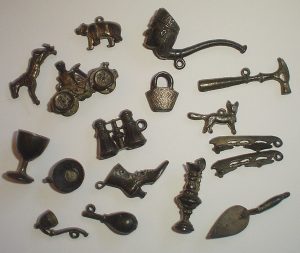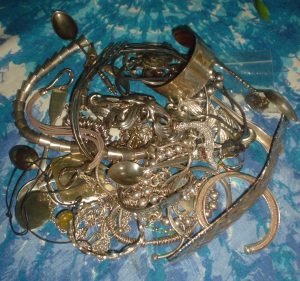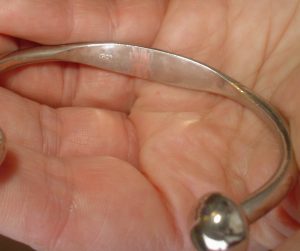I finally did something I’d been meaning to do for ages… bought a precious metals testing kit. It came from a British company called Caratest, who sell their kits through eBay and Amazon (and also on their own site, www.caratest.com, which seems to be down at the time of writing).
It consists of:
1. Three vials of liquid – one for testing silver, one to test for 9 carat gold and one to test for higher gold purities.
2. A file, to rub any silver or gold plating off an item to give a small exposed area for testing. Obviously you need to use as obscure a part of your item as possible, so that the filed area doesn’t show. The testing itself also leaves a mark, as you will see below.
3. A magnet. It was tiny and I’ve already lost it, so it’s not shown in the pic.
4. A touchstone. Used to test for gold when you’ve got items that are too small or fragile to use a file on. You rub the article you’re testing on the touchstone to produce a streak. Then produce a second streak with an item of known gold purity. (You can actually buy little pointy pieces of gold of 9, 14, 18 & 22 carat purity to use as “controls”. I may well invest in these one day.)
5. An instruction leaflet. Vital for a noob like me. Has a handy colour guide to show what type of results to expect depending on whether your charity shop find is in fact real precious metal or just faking it.
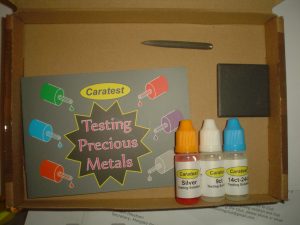
On to the testing. I have several “might be silver” items in my vaults, one of which was a necklace that purported to be made by Tiffany from sterling silver. Sadly, it was not:
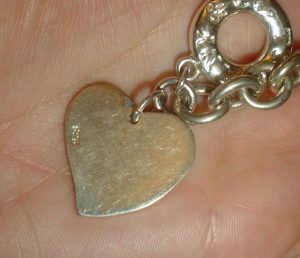
You can see the greenish bit on the edge of the heart, near the top. That’s where I filed a small spot. Surrounding it is an area of pinky red where the silver plating gave a false positive result.

